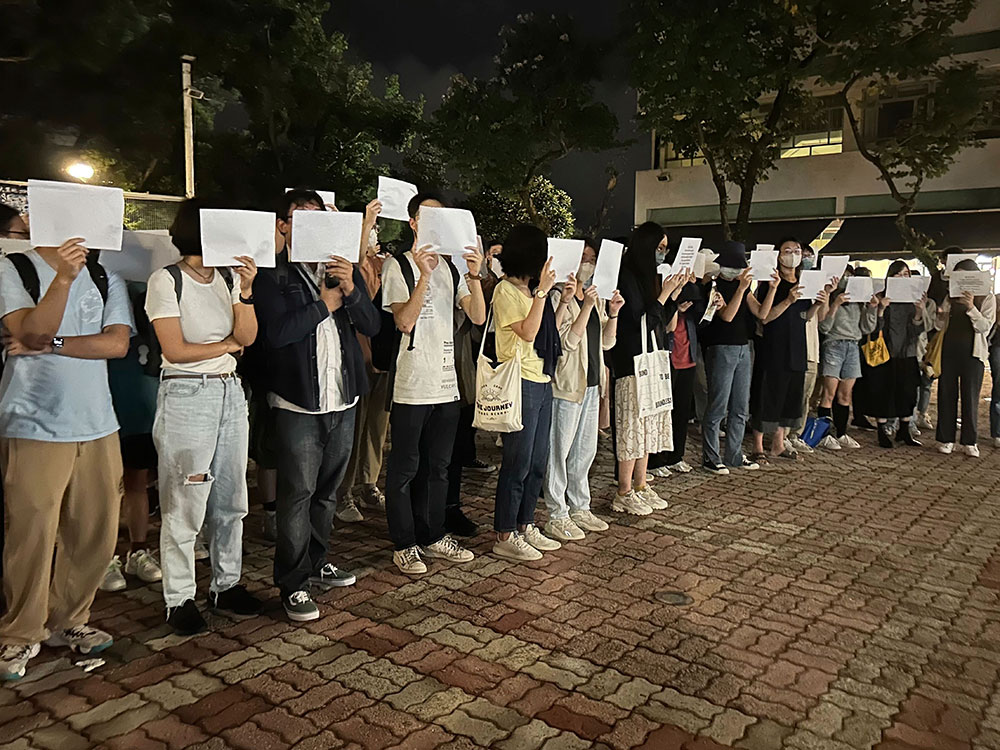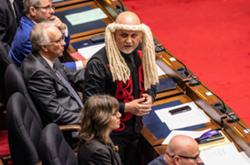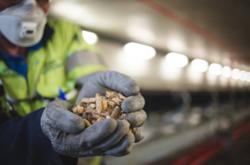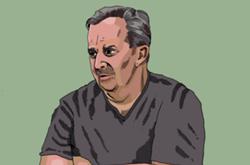Back in January 2020 I wrote my first Tyee article on what was not yet named COVID-19. Near the end, I made the following observations on China’s president:
“Xi Jinping, after years of entrenching himself as a leader for life, has shown either Mao-style determination to assert control, or completely lost his nerve. He’s presiding over a health-care system far better than that which faced SARS and H1N1, but even the top experts see something in the coronavirus (or the response to it) that scares them too.”
President Xi has far more reason to be scared now than he might have had in 2020. And so do we.
Taken singly, China’s problems in 2022 don’t seem all that serious. Taken together, they look like a polycrisis, and the biggest challenge the Communist Party of China has seen since Tiananmen Square in 1989. We in Canada, regardless of our new Indo-Pacific Strategy, could find ourselves as mere collateral damage of a Chinese collapse.
The first challenge is COVID-19. The world was stunned in 2020 when Xi ordered a severe lockdown not only of eight million people in Wuhan, where the virus first appeared, but of all Hubei province (population 58 million). It was drastic, but it seemed to work. As the pandemic spread around the world, other countries tried versions of lockdown: Vietnam, New Zealand, Australia. They did very well compared to the rest of us, but eventually the virus got through to them as well.
A one-two COVID punch
Now the coronavirus seems to have got through China’s defences. After two years of “dynamic zero-COVID” lockdowns, China saw a sharp spike last spring, largely centred on Shanghai. Then case counts dropped and stayed low until late October, when they started a climb to an even higher spike. By late November the seven-day rolling average of COVID-19 cases was over 27,000 daily. On Nov. 1, Beijing reported 23 COVID-19 cases; on Nov. 27, 4,307. The cumulative total since the start of the pandemic was 1.4 million cases.
In a country of 1.4 billion people, those are trivial numbers: literally one Chinese citizen in a thousand has been confirmed as having COVID-19. Even with the two spikes, Xi’s zero-COVID policy looks vindicated. After all, the U.S. reported 1.1 million cases in November alone, and a total of 99 million cases.
‘A single spark’
But lockdowns were supposed to protect people, and now they’re failing to do so. In Urumqi a few days ago, an apartment fire killed 10 people; the building was reportedly locked down and the residents couldn’t get out.
As Mao Zedong famously observed, “a single spark can start a prairie fire.” Protests have broken out all over China, on a scale not seen since Tiananmen in 1989. That in itself must have alarmed the party.
Most previous protests have been about single-issue local problems — a crooked party boss, bad working conditions. But these late-November protests have been about national policy — specifically, Xi’s lockdowns. Moreover, the protesters seem to be co-ordinating their efforts from Urumqi in Xinjiang province to Urumqi Street in Shanghai.
This puts Xi and the Chinese Communist party brass in an impossible situation. Their policy has been a success, but at a very high price. Today’s prosperous citizens of China are not as stoic as their grandparents were in the famine-ridden days of the Great Leap Forward and the horrors of the Cultural Revolution. The grandchildren expect more from life, and they see how others live. They were furious when they saw the unmasked throngs in the World Cup games in Qatar, and Chinese TV no longer shows the barefaced soccer fans. But don’t be surprised if COVID-19 spikes among those fans and their families.
Lockdowns have certainly hindered China’s economy and Beijing has taken steps to revive it.
But Xi is unlikely to ease restrictions. For one thing, it would look like weakness, or an admission that he’d made a mistake.
That could lead to more dangerous protests, even outright uprisings.
‘Over 1.5 million deaths’
Worse yet, it’s almost certain that easing restrictions would lead to the explosive spread of COVID-19, just as other countries have seen. China’s vaccination rates have been very good, but not with vaccines that are effective against Omicron variants. The sheer number of cases would likely trigger proliferation of still newer variants.
In 2020, Xi could marshal health-care workers from all over the country and send them to Wuhan in a public-health blitzkrieg. Today, with cases erupting all over, local health-care systems would be on their own, just like Canada’s.
David Moser, a longtime resident of China and author of a book on the Chinese language, recently tweeted a scientific model’s prediction from last spring.
What if China lifted the zero-covid policy? (Assuming no new vaccines) Over 1.5 million deaths, 15-fold strain on ICU capacity, 77% deaths among unvaccinated elderly +60. This is the govt's quandary; Past policies have now painted them into a corner. https://t.co/ncMgei601c
— David Moser (@david__moser) November 27, 2022
A COVID-19 surge would trigger still more economic damage. Violent protests by Foxconn workers in Zhengzhou have caused, among other problems, a shortage of new iPhone 14s.
If Chinese industries lose their reputation for reliable production and delivery, it will be very hard to regain. Countries like India and Vietnam will be delighted to compete for business against a crippled China.
Compounding China’s economic problems is climate change. The country has experienced an almost unending heat wave since last summer, with November temperatures breaking seasonal records. China’s farmers are struggling to cope with the consequences.
Impending water wars
Heat and drought have reduced water levels in the Yangtze River by half, creating still more problems for agriculture and power generation — and for Chinese manufacturing. The Yangtze’s low level has resulted in saltwater getting into Shanghai’s water supply.
China’s water security problems also mean energy security and food security problems. The government is actually planning to divert water from the headwaters of the Yangtze across the Tibetan plateau to the Yellow River and then pump it to dry northern provinces. But another proposal under consideration is to divert water from the headwaters of rivers like the Mekong and Brahmaputra — taking other countries’ water as global warming worsens. That would guarantee water wars between nuclear powers.
Xi seems unlikely to change his lockdown policy, especially if he’s convinced that easing restrictions will unleash COVID on a billion people in China. But he is going to need a reasonably sound economy, and Canada is going to need a sound Chinese economy as well. In the Liberals’ new Indo-Pacific Strategy, we’re going to spend a token $2.3 billion over five years to strengthen security and economic ties with other countries.
Making faces while making money
We in Canada and China have been making faces at each other ever since we busted Meng Wanzhou at YVR in 2019. But China-Canada trade has actually boomed since then. According to the China Institute at the University of Alberta, “Canada-China trade grew steadily over 2021. Canadian exports to China grew at the highest rate seen since 2018 and growth in Canadian imports from China was the highest it has been in over a decade.”
That meant $28.84 billion in Canadian exports in 2021.
The China Institute also notes that our exports to China grew even through the first year of the pandemic, and kept growing, citing a “23.85 per cent leap between total Canadian exports to China in 2019 and 2021.”
And what was our top export? “Canadian exports of bituminous coal soared in 2021, vaulting it to first place among Canadian exports to China ($3.50 billion, +379.18 per cent YoY).” With hydro power threatened by drought, China is making up the energy difference by burning coal.
So we’ve effectively outsourced part of our carbon emissions to China, which return to us in the form of Chinese imports. In 2021, those were worth $85.67 billion, roughly three times what we exported.
And what did we buy from China? Laptops, cellphones, network devices, video game consoles. No charge for the atmospheric rivers, wildfires and heat domes.
Xi’s dilemma
The China Institute report discusses the supply-chain problems caused by Xi’s “dynamic zero-COVID” policy — problems unlikely to be remedied soon. Relaxing the policy would worsen the supply chain as millions fell ill. Keeping the policy tight would result in more Foxconn-style worker revolts and street protests.
Xi Jinping may also be trapped by his own words. In his book The Governance of China, he includes a 2016 essay on how to “Promote a Healthy China.” Among other things, he says:
“We should enhance disease prevention, raising the public’s awareness to prevent and control epidemics…. We should attach importance to the prevention and control of major diseases, improving related strategies to minimize the number of patients.”
In the same essay he also warns that “Unresolved problems will threaten public health, restrict economic growth and undermine social harmony and stability.”
Given the unresolved problem Xi now faces, he might be tempted to distract his people by launching a war to “reunify” Taiwan with the mainland. Such a war would likely pull in the U.S., Canada, Japan and much of Europe.
But the young people now protesting in the street would, I hope, forbid such a threat to China’s public health, economic growth and social harmony and stability. A real uprising against Xi and the party would convulse not only China but the world. It would certainly not result in a western-style liberal democracy eager to be everyone’s friend. More likely a return to the warlord era of the 1920s, only with nuclear weapons.
In that Tyee article from January 2020, I also wrote: “A rattled government makes mistakes, and then makes mistakes in trying to recover. Its people notice, and so do other governments. Hong Kong has seen over six months of upheaval by anti-Beijing protests; they will look like a kindergarten tantrum compared to what the mainland Chinese could unleash.”
I’m not fond of Xi Jinping. But odds are, if he is toppled what comes next will be chaotic and no mirror of western democracy. It could be far worse for China and for us. ![]()
Read more: Rights + Justice, Politics

















Tyee Commenting Guidelines
Comments that violate guidelines risk being deleted, and violations may result in a temporary or permanent user ban. Maintain the spirit of good conversation to stay in the discussion.
*Please note The Tyee is not a forum for spreading misinformation about COVID-19, denying its existence or minimizing its risk to public health.
Do:
Do not: